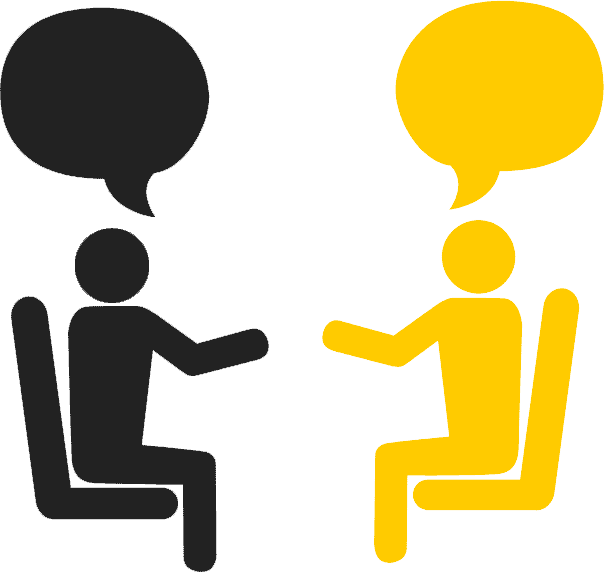Chatbot Automation: The Secret to Maximising Lead Generation

Technological advancements have revolutionised how businesses operate, and one key aspect of success is generating high-quality leads. Fortunately, we have the perfect solution to help you achieve this: chatbot automation! By incorporating automated chatbots into your business strategy, you can streamline customer interactions, provide instant support, and capture valuable leads.
According to a recent study, chatbot automation can increase your conversion rate by 100%. That’s right! Chatbot automation is taking the business world by storm, and for a good reason. It combines the power of artificial intelligence with personalised interactions to engage your audience.
Today, we will explore how you can leverage this cutting-edge technology to revolutionise your lead-generation efforts and propel your business forward. We’ll also uncover the secrets of optimising your chatbot’s performance for maximum lead generation.
What is Chatbot Automation?
Chatbot automation is the process of using artificial intelligence (AI) to automate conversational interactions with users. It’s like having a digital representation of your brand that can simulate human-like conversations, understand natural language, and respond intelligently to queries.
These intelligent chatbots can be integrated into various communication channels, such as websites, messaging apps, or social media platforms. They use a combination of predefined scripts, machine learning algorithms, and data analysis. And instead of having a team of customer support agents manually handle every inquiry, chatbots can handle a significant portion of those interactions.
But chatbot automation isn’t just about efficiency—it’s also about enhancing customer experiences. Leading chatbot development solutions incorporate AI and machine learning algorithms to continuously improve these capabilities, ensuring that chatbots become more sophisticated and effective over time. This personalised approach makes customers feel heard and valued, increasing their satisfaction and engagement with your brand.
Several popular chatbot tools available for businesses include:
- Dialogflow: Google’s platform for creating AI-powered chatbots with natural language understanding capabilities.
- IBM Watson Assistant: Utilises AI and machine learning to develop intelligent virtual agents across multiple platforms.
- Chatfuel: A user-friendly tool that enables chatbot creation without coding skills, specifically designed for Facebook Messenger.
- Microsoft Bot Framework: A versatile platform supporting various channels, programming languages, and creating conversational experiences.
- ManyChat: Designed for Facebook Messenger, it offers visual bot building, automated messaging sequences, and audience segmentation capabilities.
How to Design an Effective Chatbot for Lead Generation
Now that you understand the power of chatbot automation in lead generation let’s dive into the exciting realm of designing an effective chatbot that will captivate your audience and generate valuable leads.
Know Your Audience
Creating an effective chatbot requires a deep understanding of your target audience. By gaining valuable insights into their needs and preferences, you can design a chatbot that delivers exceptional experiences. Here’s how you can achieve that:
- Conduct customer research: Engage with your target audience through surveys, interviews, or social media to gather valuable insights about their pain points and preferences.
- Develop user personas: Create detailed profiles representing your typical customers, including their demographics, goals, and challenges. Use these personas to guide your chatbot’s interactions and tailor your messaging accordingly.
- Utilise data analytics: Leverage data analytics tools to gain insights into user behaviour, preferences, and frequently asked questions. This information will help you design a chatbot that addresses their specific needs effectively.
Craft Engaging Scripts
When crafting chatbot scripts, prioritising conversational, relatable, and enjoyable interactions is key. By employing the following techniques, you can ensure that your chatbot engages users and provides a pleasant experience:
- Use conversational language: Avoid formal or robotic language. Write chatbot scripts in a natural, conversational tone that resonates with your audience. Use phrases like “Hey there!” or “How can I assist you today?” to create a friendly and welcoming experience.
- Inject personality and humour: Add a touch of personality to your chatbot’s responses. Depending on your brand voice, you can incorporate humour, wit, or storytelling techniques to make the conversations more engaging and memorable.
- Provide clear and concise responses: Keep your chatbot’s responses concise and to the point. Break complex information into smaller chunks, and use bullet points or step-by-step instructions to guide users effectively.
Personalise and Customise
Personalising and customising your chatbot’s interactions is a surefire way to enhance engagement and build user trust. By implementing the following strategies, you can create a chatbot experience that feels tailored and relevant to each user:
- Collect and use customer data: Integrate your chatbot with customer relationship management (CRM) systems or databases to access user information. Use this data to personalise responses, addressing users by name and referring to their preferences or previous interactions.
- Offer proactive assistance: Anticipate user needs by proactively offering relevant information or assistance. For example, if a user is browsing pricing information, your chatbot can offer a pricing guide or a personalised consultation to help them make informed decisions.
- Use empathetic language: Show empathy and understanding in your chatbot’s responses. Acknowledge users’ challenges and frustrations, and provide solutions or reassurance. Phrases like “I understand how frustrating that can be” or “I’m here to help you overcome that obstacle” can create a positive and supportive experience.
Be Proactive
To maximise lead generation, your chatbot must take the initiative and actively engage users. By implementing the following techniques, you can make your chatbot more proactive and effective in capturing leads:
- Implement proactive greetings: Instead of waiting for users to initiate conversations, your chatbot can greet website visitors with a friendly message. For example, “Hi there! How can I assist you today?” This proactive approach encourages users to engage with your chatbot.
- Use exit-intent pop-ups: When a user is about to leave your website, trigger a chatbot pop-up offering assistance or a valuable resource. This can capture their attention and encourage them to stay or leave their contact information before they go.
- Provide helpful prompts: Throughout the user journey, your chatbot can offer prompts or suggestions to guide users towards relevant content or solutions. For instance, if a user reads a blog post, your chatbot can suggest related articles or offer a download of content.
Continuous Improvement
Optimising your chatbot for lead generation is an ongoing process that requires continuous improvement and refinement. To enhance its performance and maximise lead generation, consider implementing the following strategies:
- Analyse chatbot interactions: Regularly review chat logs and analyse user interactions. Identify common questions or issues that can be addressed more effectively. Use this feedback to refine your chatbot’s responses and improve its accuracy.
- Add conversational paths: Based on user interactions and feedback, identify areas where your chatbot can offer additional conversational paths or prompts. This can provide more comprehensive support and guide users towards lead-generating actions.
- A/B test variations: Experiment with different chatbot approaches and measure their impact on lead generation. Test variations in messaging, greetings, or response times to determine what resonates best with your audience.
Conclusion
With your newfound knowledge and strategies, you hold the key to unlocking the true potential of chatbot automation for maximising lead generation. Mastering the art of effective interactions, implementing actionable techniques, optimising performance, and embracing best practices will bring unparalleled success in lead generation.
No more relying on outdated passive methods for lead generation. It’s time to step up and actively engage with your target audience, capturing their attention and interest. Embrace the transformative power of chatbot automation to revolutionise your lead generation efforts and propel your business to new heights of success. Start capturing more leads today!





